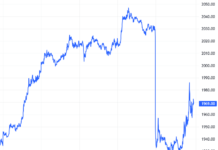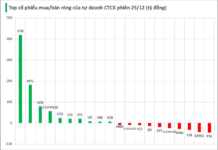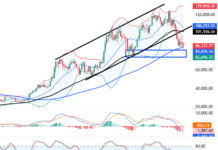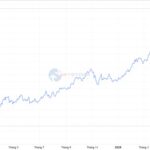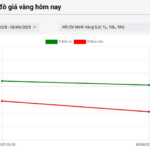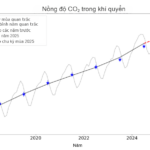According to Mr. Nguyen Quang Huy, CEO of the Finance and Banking Department at Nguyen Trai University, the price of gold rings has traditionally closely followed international rates, moving almost in tandem with global trends and experiencing minimal local fluctuations.
Additionally, the demand for gold rings remains steady due to the public’s inclination to store, accumulate, and use them during traditional occasions. The narrow buy-sell spread also minimizes risk for buyers.
In contrast, the price of gold bars has recently been heavily influenced by government policies, leading to significant adjustments to align more closely with international prices.
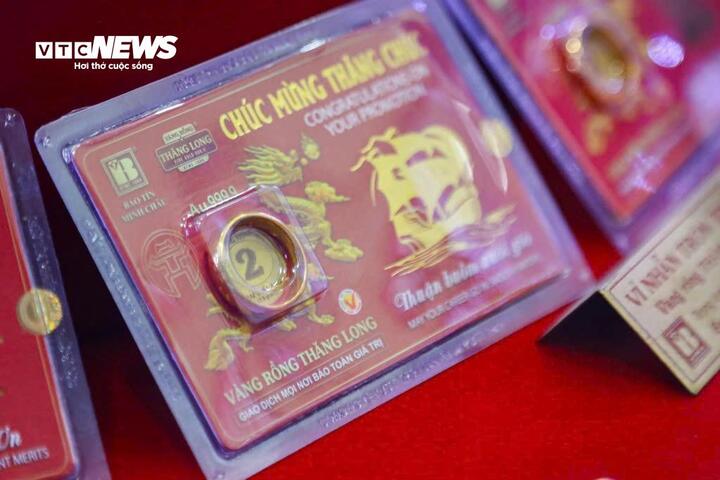
Gold ring prices are declining at a slower rate compared to gold bars. (Illustrative image: Minh Duc)
Gold bar prices are also significantly affected by market sentiment. Investors holding gold bars tend to sell when they perceive the price gap narrowing, further accelerating the downward trend.
Moreover, gold bars are primarily used for investment and have limited practical applications in daily life. As a result, when market sentiment shifts, the price adjustment range is more pronounced.
Mr. Huy advises investors that gold rings currently serve as a “stable anchor” for household capital. Given their close alignment with international prices and practical demand, they are a safe storage option suitable for defensive strategies.
Meanwhile, gold bars are in an adjustment phase, making it difficult for prices to sustain unusually high levels. While short-term speculative roles have diminished, they still hold value for long-term investors with a higher risk appetite.
Domestic gold prices have recently declined following the State Bank’s communication to the Ministry of Culture, Sports, and Tourism regarding Decree 232 dated August 26, 2025. This decree amends and supplements Decree 24/2012 on the management of gold trading activities.
According to the State Bank, ending the state monopoly on gold bar branding, expanding gold bar producers, and allowing raw gold imports will diversify the gold supply in the market.
Dr. Le Xuan Nghia, former Vice Chairman of the National Financial Supervisory Commission, also noted that these changes will increase market transparency, boost gold supply, reduce cross-border smuggling, and help the central bank control foreign currency flows from gold exports.
More importantly, ending the monopoly on gold bars will narrow the gap between domestic and international gold prices, eliminating the current unreasonable disparity.
“Domestic gold prices will decrease in the near future. Commercial banks, accustomed to daily USD transactions with international partners, can quickly engage in gold import-export activities. The remaining issue is whether the State Bank will grant licenses promptly,” said Mr. Nghia.
Gold expert Tran Duy Phuong noted that SJC gold prices have surged and largely detached from global prices due to supply shortages. This supply-demand imbalance has driven domestic gold prices to record highs.
Mr. Phuong believes that Decree 232, which eliminates the monopoly on SJC gold bars, will foster greater market competition. Banks and eligible businesses can now produce gold bars, providing more options for buyers and reducing pressure on SJC, which currently holds 80% market share.
The most critical aspect of the new decree is the allowance for raw gold imports. This enables not only SJC but also other companies to balance supply, apply for import licenses, and produce gold bars for the market.
According to Mr. Phuong, the new regulations on raw gold imports will address prolonged shortages. As supply improves, market demand will stabilize, cooling prices. The current gap between domestic and international gold prices, ranging from 18 to 19 million VND per tael, will also narrow.
At 9:30 AM on September 16, gold bars were bought at 128.4 million VND and sold at 131.1 million VND, down 3.9 million VND and 3.4 million VND respectively after one week.
Meanwhile, gold rings were quoted at 126.2 – 129.2 million VND per tael (buy – sell), decreasing by 1.5 million VND per tael in both directions over the same period.
Central Bank Region 2 Updates on Gold Price Trends, Advises Citizens and Businesses
On September 11th, the State Bank of Vietnam, Branch 2 (SBV Branch 2), released an official statement regarding the gold market, outlining new regulations and providing crucial advice for both individuals and businesses.
“Monetary, Gold and Stock Market Management: Strategies for Stability and Growth”
The Deputy Prime Minister, Ho Duc Phoc, has signed and issued an urgent dispatch on the 11th of September 2025, addressing the management and governance of the monetary, gold, and securities markets. This dispatch, numbered 161/CD-TTg, underscores the government’s proactive approach to maintaining stability and devising effective solutions for these vital markets.
Today, September 8: Gold Ring and SJC Gold Prices Drop Sharply
The relentless rally in gold prices has finally taken a breather, with gold rings and SJC gold witnessing a unanimous decline today.
The Golden Opportunity: Mapping the Route to a Vibrant Gold Exchange
Introducing the visionary initiative to revolutionize the gold trade in our nation: the proposal to establish a National Gold Exchange or enable gold trading on the Commodity Exchange, including the formation of a dedicated Gold Trading Floor. This ambitious endeavor aims to create a transformative platform that elevates the gold market to new heights, offering unparalleled opportunities for investors and traders alike. With a focus on innovation, transparency, and security, this exchange promises to be a game-changer, fostering a vibrant and robust gold trading ecosystem.
















